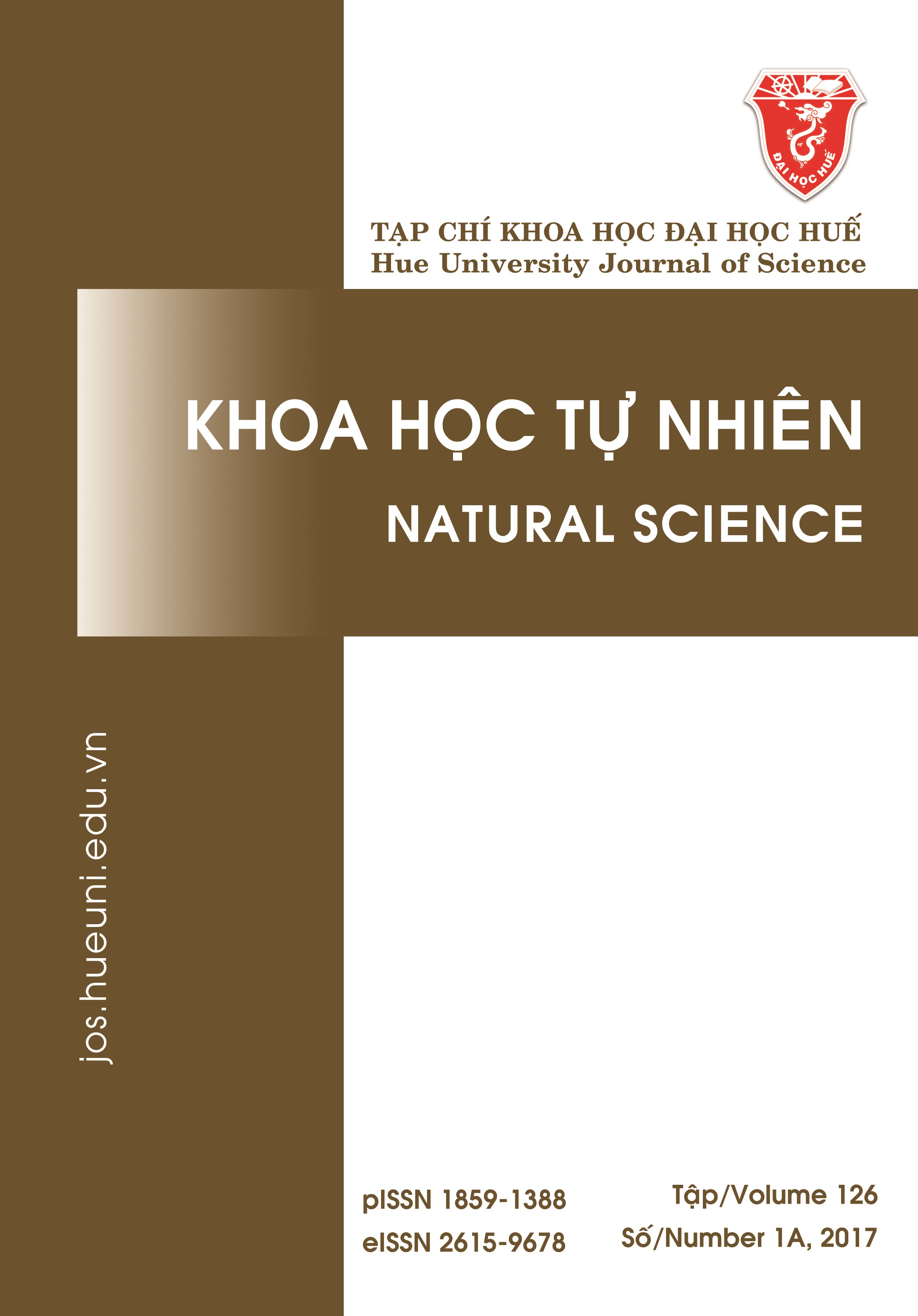Abstract
The bivalve Meretrix lyrata was exposed to various dissolved levels of copper (Cu) and lead (Pb) for 28 days. For the examination of the metal bioaccumulation in body tissues of the bivalve, a number of the metal concentrations in experimental tanks (containing the bivalve and water collected from farming area at the Tien estuary, Tien Giang province) were prepared: Control level (2.1 ± 0.4 ppb Cu and < 0.2 - 0.5 ppb Pb); level M1: 30 ppb Cu and 50 ppb Pb marked as M1–30–50; the other levels are as follows M2–60–150, M3–100–300 and M4–200–600. Under experimental conditions, strong linear correlations between the metal contents in the bivalve body tissues (y, ppb wet weight) and exposure times (x, day) were found with R = 0.97–0.99 (p < 0.05). There were also linear correlations between y and the metal concentrations in the experimental tank water (x, ppb) with R = 0.88–0.90; 0.95–0.99; 0.75–0.87 and 0.99 after 7, 14, 21 and 28 days of exposure, respectively. However, for a high pollution level of the metal in the tank water (level M4), from the 14th day of exposure, the bivalve started excreting more metal than accumulating it and died after 21 days of exposure. Strong linear correlations between the rate of metal accumulation (RMA) in the bivalve (ppb/day) and the metal level in the tank water for 21–28 exposure days were found with R > 0.99 (p < 0.01). The maximum accumulation level of the metals in the bivalve was approximately 1500 ppb Cu and 25000 ppb Pb, or Pb accumulated in the bivalve was 17 times higher than Cu. The obtained results indicated that the Meretrix lyrata could be used as a bio-indicator for the metal pollution in aquatic environment at the Tien estuary area.

This work is licensed under a Creative Commons Attribution-ShareAlike 4.0 International License.
Copyright (c) 2017 Array




